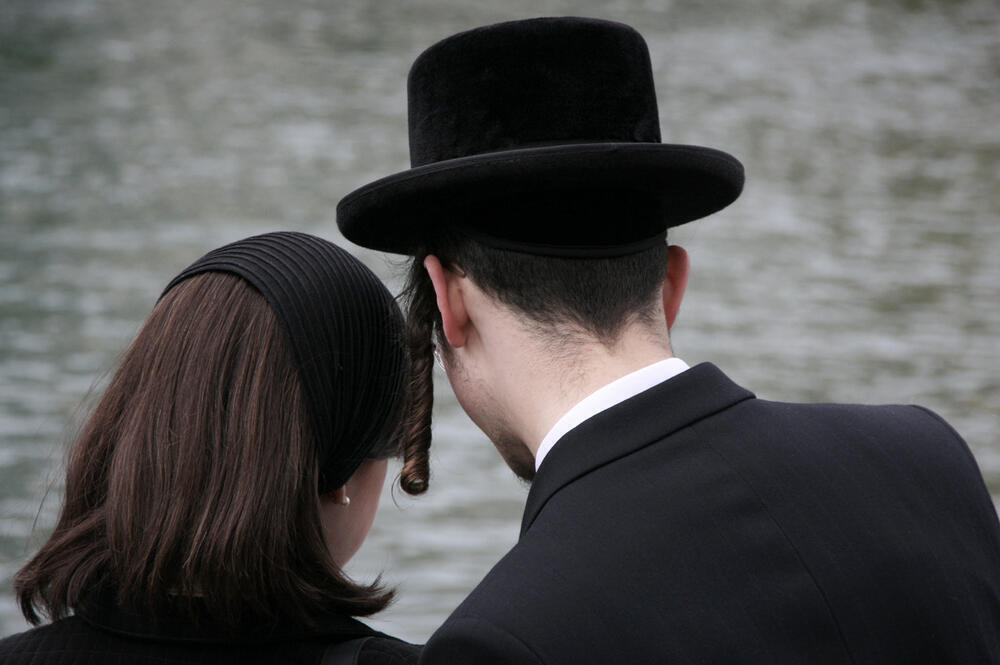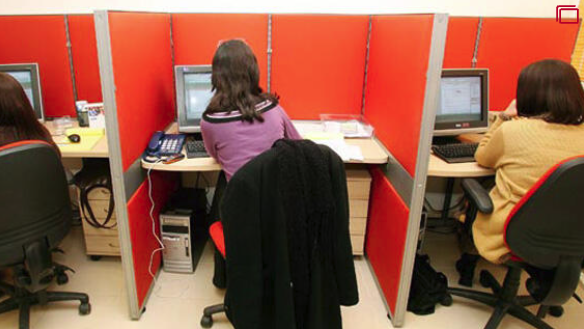In Israel’s public debate over the role of the ultra-Orthodox community, one recurring theme is the perceived contrast between Haredim in Israel and their counterparts in the United States. “American Haredim work,” goes a common refrain—offered both by secular Israeli critics and by reform-minded voices within the Haredi community itself. Yet despite the popularity of this narrative, actual data on the American Haredi population is scarce, and comparative research even more so.
Still, American Haredim are undeniably influential in Israeli ultra-Orthodox life. Chief among their roles is financial: they provide essential support to the yeshiva and kollel systems in Israel. This became particularly evident last year when the “Olam HaTorah Foundation” raised tens of millions of dollars from wealthy American Haredim to help offset Israeli budget cuts to religious institutions. While the foundation's website cites over $110 million raised, sources close to the organization say the real figure is closer to $75 million, likely due to unfulfilled pledges. Foreign donations have long been a key part of yeshiva funding, with most Israeli yeshiva leaders making multiple fundraising trips each year to the U.S. or Latin America.
But American Haredim also play a symbolic role. They are frequently cited as proof that ultra-Orthodoxy can coexist with employment, suggesting a path for Israeli Haredim to follow. However, as researchers Gilad Malach and Yair Ettinger of the Israel Democracy Institute showed in a 2021 study, the differences may be overstated. Their research indicated that the educational curriculum in American Haredi schools is similar to that in Israel, and that some American Lithuanian (non-Haredi) schools are becoming more like their Israeli counterparts—offering even less secular education over time.
A new study by three researchers from the Aharon Institute for Economic Policy at Reichman University—Dr. Hila Axelrad, Tom Sadeh, and Dr. Itschak Trachtengot—offers fresh data using a unique question found in the "American Community Surveys" (ACS), which is the survey equivalent to the CBS Social Survey in Israel. The question is "What is the primary language you speak?" Those who answered that their primary language is Yiddish are likely American Haredi. The need to use this question arose because official surveys in the United States are prohibited from asking questions related to religion.
The questionnaire found about 480 households with at least one Yiddish speaker, and the research assumption is that they well represent the Haredi in the U.S., who constitute, according to estimates, about 63% of the Haredim in the US. The entire Haredi community in the U.S. is estimated at 650,000 people, which is about 150,000 households.
This creative method allowed the researchers to extract detailed demographic and economic insights about American Haredim and compare them to their Israeli counterparts. Some findings are striking: both groups show similar marriage patterns, with a median age of 20 for men and women. Hasidic women in the U.S. have an average of 5.9 children, compared to 6.9 in Israel—a difference that reflects broader national fertility trends.
Educational attainment and employment are where differences sharpen. In 2023, 19% of Haredi men and 17% of Haredi women in the U.S. held academic degrees, compared to just 2.3% and 5.8% respectively in Israel, according to the Haredi Institute for Public Affairs. A quarter of Haredi men had studied theology or religion; others pursued education (8.5%) and business (15.6%). However, the researchers caution that this initial study doesn’t analyze the quality or structure of American academic programs, so the real value of these degrees remains unclear.
Employment, too, tells a complex story. In Israel, about 60% of Haredi men and 75% of Haredi women are employed. In the U.S., the figures are reversed: 84% of Haredi men are employed—matching the national average—while just 59% of Haredi women work. That male employment gap is the key point the researchers sought to highlight.
“Economic integration among American Haredim hasn’t come at the expense of community identity,” said Axelrad in an interview with Calcalist. “Their family sizes and young marriage ages show they remain deeply embedded in Hasidic life.”
Still, the researchers acknowledge the American model is far from ideal. There’s no clear answer as to why the differences emerged. The study doesn’t explore the role of leadership, public policy or economic incentives. Interestingly, it also notes that Israeli Haredi households are more likely to have both spouses working (56%) compared to American Haredi homes (45%). The researchers suggest this may reflect differences in cultural values: the Israeli Haredi world emphasizes Torah study as a central male obligation, especially among non-Haredi groups like Lithuanians, while the Haredi tradition is somewhat more open to male employment.
At the same time, high employment rates among ultra-Orthodox women may be tied to a unique balancing act in Israeli Haredi culture between the values of modesty and the financial necessity of supporting a Torah-focused household.
Yet even in the U.S., signs point to a gradual Israelization. The study notes that American Lithuanian yeshivas are cutting back on secular studies, following Israeli models. And while higher education rates among American Haredim appear encouraging, they’ve declined sharply over the years—from 33% of men in 2006 to 19% in 2023, and from 26% to 17% among women. Fertility is rising slightly, while marriage age is dropping—further mirroring Israeli norms. Meanwhile, American Haredi women's employment lags behind that of their Israeli peers.
Get the Ynetnews app on your smartphone: Google Play: https://bit.ly/4eJ37pE | Apple App Store: https://bit.ly/3ZL7iNv
On income, American Haredim still fall short of their economic potential. Median household income is $52,000—about 74% of the U.S. median, compared to 65% for Israeli Haredi households relative to non-Haredi Jewish households. Haredi men in the U.S. earn roughly 88% of the national average, and women earn 77%. In Israel, Haredi men earn just 45% of the non-Haredi average, and Haredi women earn 62%.
But these figures may be misleading. Median income in New York and New Jersey—where most Haredim live—is much higher than the national average. When compared with local figures, Haredi incomes may amount to less than 65% of the regional median. A more granular comparison with non-Haredi American Jews—who generally earn more than the national average—would likely reveal even starker disparities.
In short, American Haredim are not maximizing their economic potential, either. Their communities may offer important models and insights for policymakers, but they are not a blueprint. They reflect one version of ultra-Orthodoxy—not necessarily a more successful one. As the authors suggest, it’s time to move past simplistic slogans and toward nuanced, data-driven understanding.




